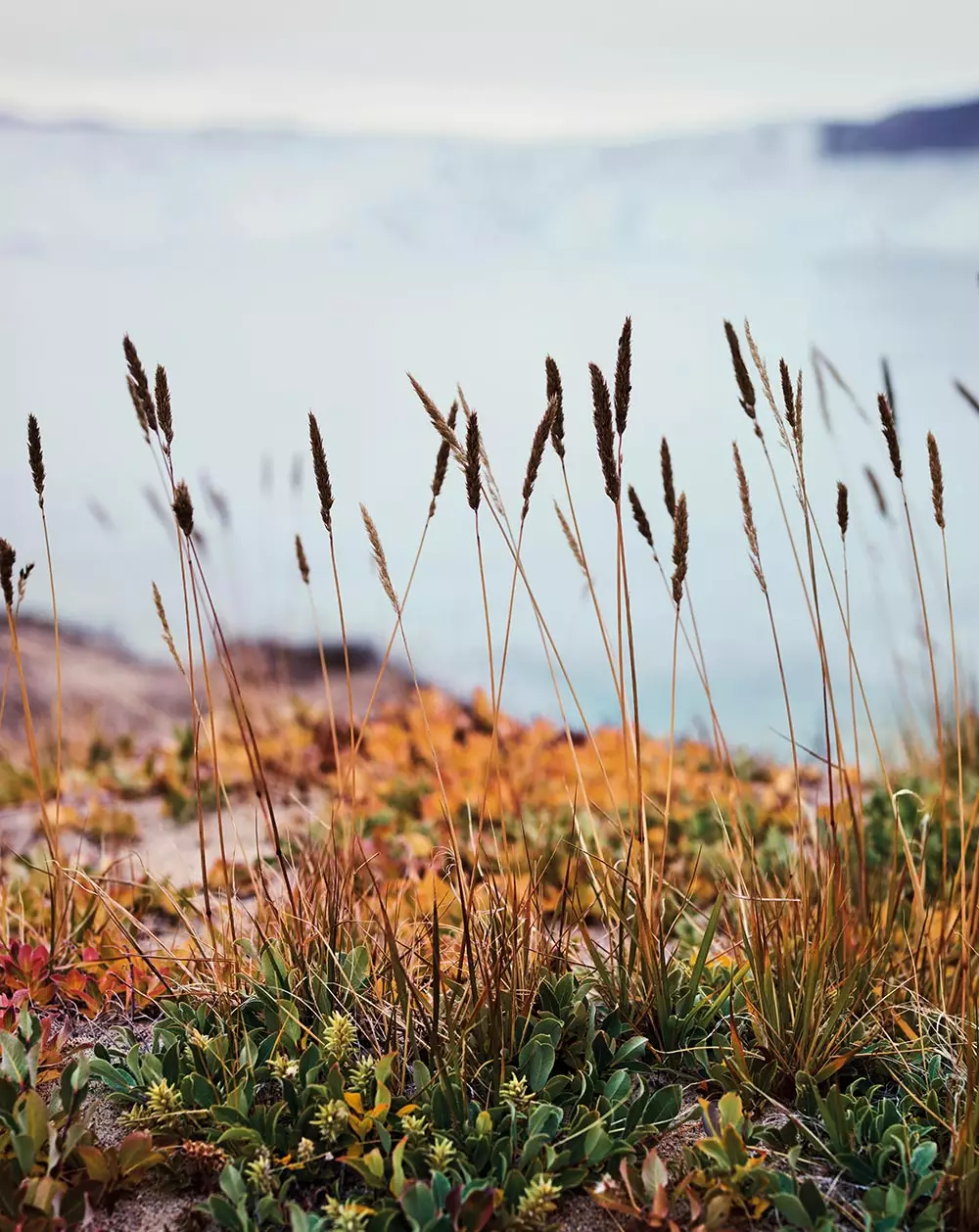
alpine bistort meadow
It's August in Greenland and winter can already be guessed . An immense tide of ice floes and sleet is amassing along the west coast, at the remote Eqi Glacier. About 240 kilometers above the Arctic Circle , it is difficult for the boats to reach the solitary camp set up between some nearby rocks. Alive, powerful, active, the glacier roars, crackles and bursts spitting ice . It booms like dynamite in these wild winds, like a gigantic, thunderous army closing in. It is a huge and impenetrable white marble wall taller than the Eiffel Tower.
No wonder the group of Danish science students who run the camp are obsessed with Game of Thrones. In the afternoons I see them excited with their reddish faces, fighting each other with wooden swords on the rocks that protrude from the glacier, laughing and enjoying the privilege of being here. The immensity of the open and clean air , the months away from any city, family or mechanical noise, the hazy memory of arctic days with no sunrise and moons that never fade. And now this exquisite and brief autumn, animated by local birds such as arctic arnolds or the occasional tiny sparrow.
Greenland is the largest island in the world, but only the coast, lined with fjords, is inhabited. Just 56,000 people live in more than a million square kilometers, most of them in the Southwest. This autonomous overseas division of the Kingdom of Denmark –although it is not a member of the European Union– depends, mainly, on Danish subsidies and imports and more than 80 percent of its economy is based on fishing and subsistence hunting, also of whales, seals.
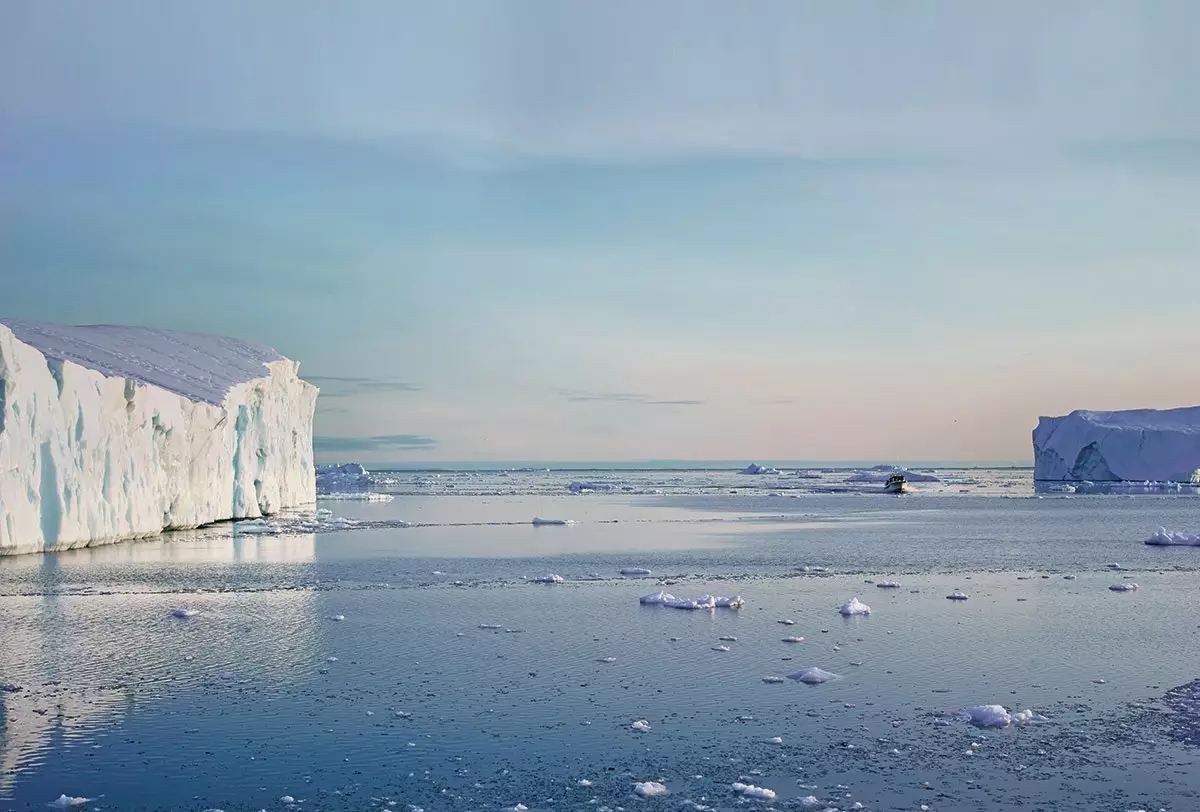
Icebergs floating in the Ilulissat Icefjord, one of the world's northernmost UNESCO World Heritage Sites. Here the ice of the Jakobshavn glacier (or Sermeq Kujalleq, in Greenlandic) breaks off
Most visitors stop in the capital, Nuuk , to see purple and green northern lights, and take a sleigh ride to peek into the infamous center of the island : the ice field, contained in a block more than three kilometers thick, and constantly fed by layers of compressed air and snow that press inward with a force that contorts the center of the island. More to the north, the northern lights are heavenly white and the incandescent air stretches far , far away, in a sparkling immensity. For millennia, hardly anyone came here, but now, during the summer and fall, when the coastline is clear of snow, boats arrive with curious hikers who stay at Eqi's handful of simple wooden shelters.
From there they make incursions to the glacial moraine or to the mountain lakes, and then, in the afternoon, gather around the warmth of the stove in the community cabin converse with pleasure and vodka , and display the treasures found on their walks, unbearably evocative relics of lost expeditions. An ancient ski, carved from volcanic matter. An unopened can of lemon syrup, from before the First World War , enriched with vitamin C to combat scurvy. Although it has been in retreat for decades due to climate change, the Eqi Glacier has been the subject of study and reverence. Opposite, on the black cliffs stands a wooden cabin that is held up by frayed ropes. It was part of the French expedition to the Arctic in 1948 . Inside, the bare walls are stained a faded yellow from long, lonely hours and decades; and scrawled everywhere with graffiti suggesting the immense spiritual bewilderment of being stranded in this strange place in the world's northernmost country. "I don't know anything about anything," someone wrote in desperate handwriting, "I'm a worthless burden."
As I read this, chunks of ice and fragments from the nearby glacier are falling, shaking the cabin where I am. Remnants of past activity can be seen on the shelf. A stuffed crab brings me back to those eternal nights around fish stews and cigarettes. While, I reflect on how in Greenland 'morning' and 'evening' are mere words devoid of meaning . Depending on the time of year, there are nights that stop forever in the twilight, and days that don't bother to start over. Sometimes the sun is not even that, but a mirage, and its rays an oasis suspended in the atmosphere. "Here, in the middle of the ice, 1949".
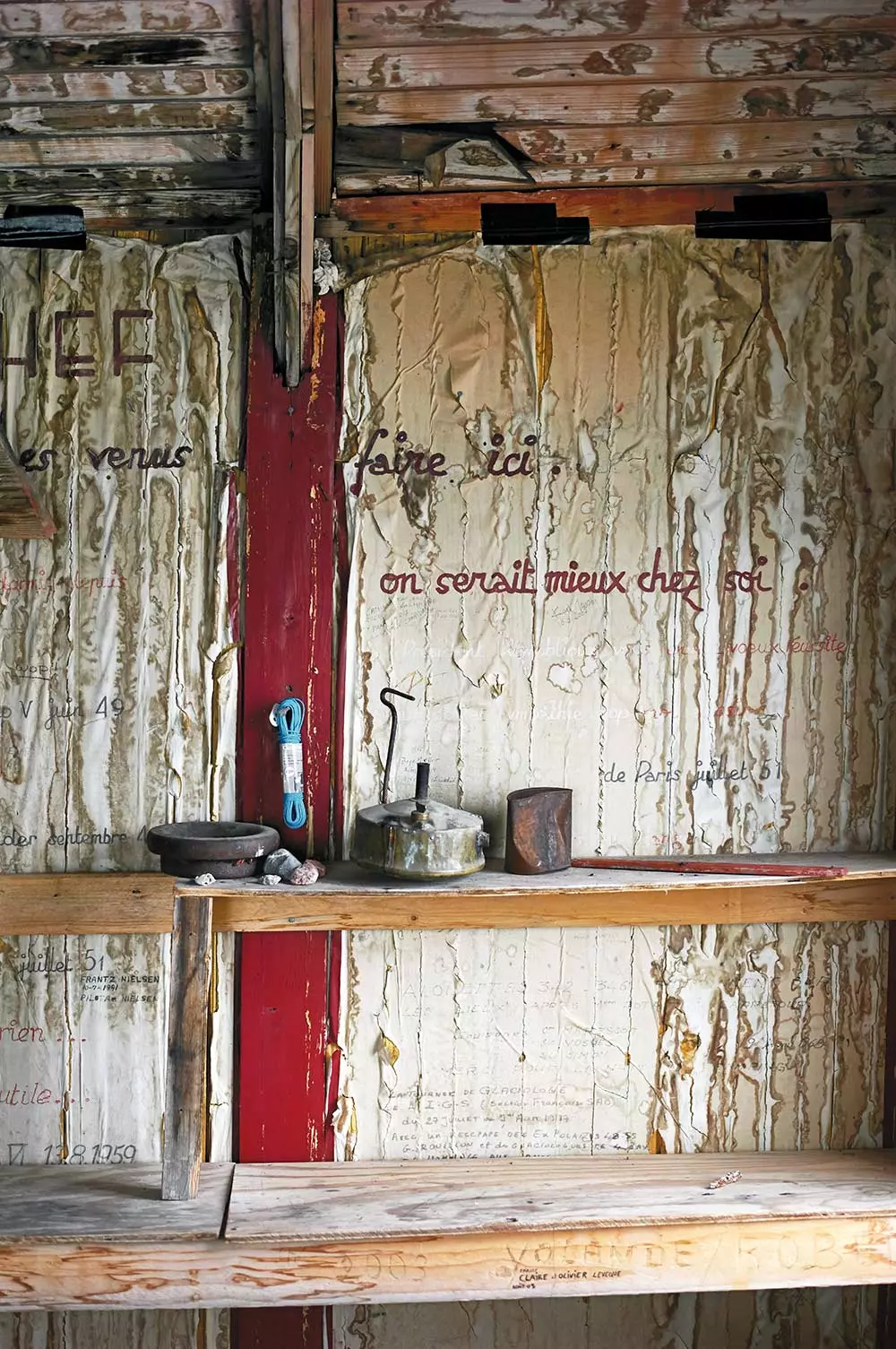
Cabin of the French expedition of 1948
On the long journey to qi I had stopped in the town of Ilulissat, with its famous fjord and around 6,000 Greenland dogs – an indigenous breed related to the huskies of Siberia and of Alaskan Malamutes –, tied to the doors of the houses. They were thin and ragged after a summer of scant food and hungry for snow and game. It was late afternoon and the whole town was in the sea fishing for halibut. I walked for hours among the dogs. A hairy flower caught my attention: They call it 'arctic cotton', or suputi in the Inuit language . These balls of pristine white fluff are so numerous that the rocky fields that die into the frozen sea look like oceans of foam. In the old stories of inuit , the sky is not much. And the sea? Creator of life, place of dreams. I sat on the shore with Nikolena, a young Greenlandic woman whose family had lived in Ilulisat . Her conversation, adolescent and intense, confused the past with the present. She told me that inside the igloos the temperature used to be so high that men, women and children wore sealskin thongs.
When the dogs began to fidget and whine at the night, we walk away from the hubbub past fish dryers in colorful cottage gardens , and cafes where they prepared grilled whale. On porches hung the skulls of musk ox, a species of bison the Alaskan Eskimos called oomingmak or 'the animal with the skin like a beard'.
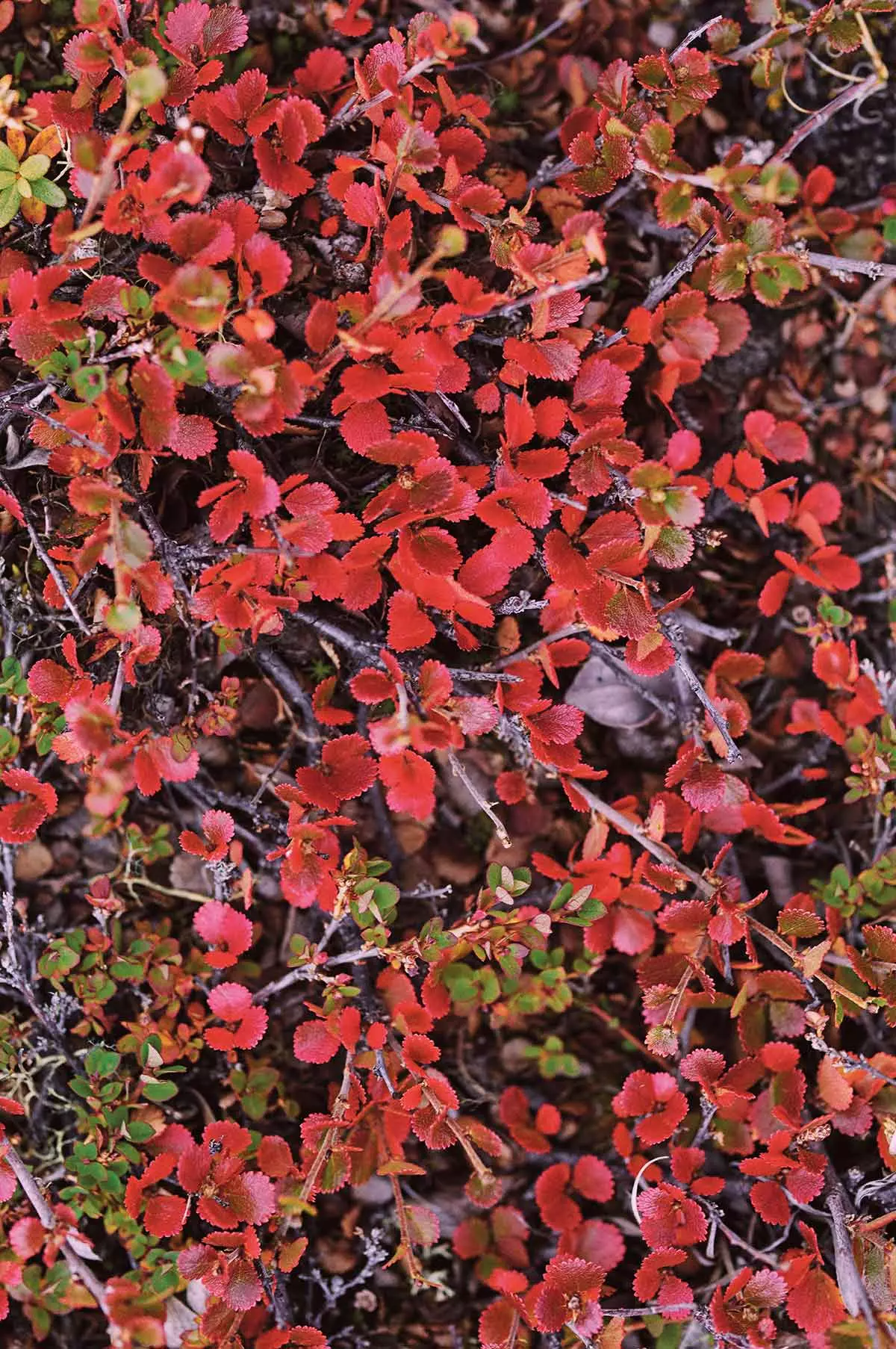
A dwarf birch, with red leaves after the thaw
“ Shiku Nikolena told me in her low, insistent voice, indulgently repeating some of my favorite Inuit words. Shiku means ice. Quaqag : mountainous. As they swept the blood and blubber of a minke whale onto the deck of a boat in the bay, the fishermen smoked and listened to a radio station playing songs from Hank-Williams . “What's the weirdest thing you've seen through a hole in the ice?” I asked the 29-year-old Fari as she threaded small pollock onto hooks. He expected her to say a narwhal, with its ivory spiral tusk protruding from its upper jaw, once coveted as a unicorn heirloom. For a long time he said nothing. Her eyes were lost in the distance, in a saffron sunset. On the ground beside his feet lay four severed seal legs. "A man," she said at last. “ A frozen fisherman. He must have fallen off a ship years before ”. Fari just shrugged. For the shrewd Greenlander, it was about fairness and balance: you hunt, you take the lives of others, and one day it's your turn to give yours.
Again in qi , we are so close to the end of the season that there are only a few left : Danish children, a couple of French who have come for a walk and a trio of Japanese naturalists. Soon it will be impossible to navigate the icy waters unless dog sleds are used. There are no roads in Greenland. As the seasons are so marked, autumn passes very quickly here, a magical period of time in which the mountains that surround us are ruthless and self-absorbed. Around the stove in the community hut I watch a resourceful young chef cook up roots poached in apple cider vinegar and a big reindeer stew. I am steeling myself before the exciting sense of vulnerability that I will feel on the way back south , just as I felt it on the lurching ship that slowly brought me here through these iceberg-strewn seas. Wind! I have only felt something slightly similar in Moscow in the mid-1980s, when I was running frozen through Red Square in the middle of December, having inadvertently exchanged my coat for a Young Communist International badge.
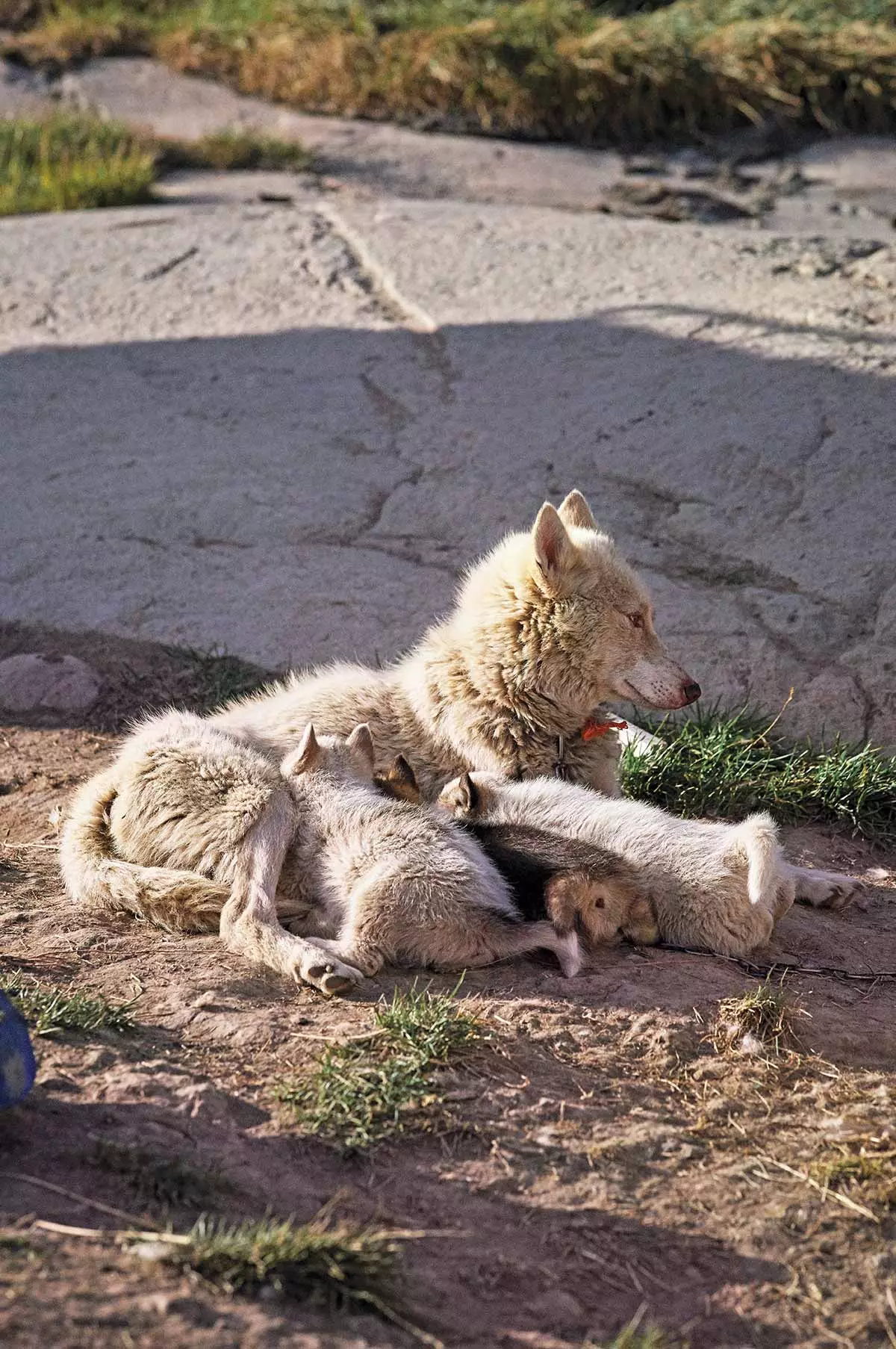
The Greenland dog, similar to the Siberian husky, is a breed indigenous to the island
ice floes, the largest floating objects in the northern hemisphere, disturbing and attractive They are made of ice that can be between one and 250,000 years old, and their shades range from bright blue to variants of blue, white or pure diamond color, depending on their age and light refraction. Icebergs are often four times larger underwater, as if they are vanishing into another dimension . Some appear stained with ash, as if they have fur. Others are modeled in the shape of ribs. Corals and apple pies. Daggers and domes. colors and colors . Melt water of an intense greenish blue. Amethyst ice bridges. A fellow traveler told me that, in the summer, he had jumped into the water and swam towards an iceberg. Crawling over him, shaken and nearly unconscious, he was bleeding all over through his clothes. The sharp ice of the Arctic can injure even a bear's paws. But I understand why he did it. Icebergs are haunted islands. Elven islands made of pearls and obsidian. Bright shells that beckon you to walk on them.
“ Now is the time to come here Oliver, the very young camp manager, assures me as we scour the cliffs collecting ingredients to complement our dinner menu. Abruptly, from the surface of the water we see emerge the high jet of a Humpback Whale –a puff of white perfection– and, moments later, its horizontal tail. Here the waters are full of life, although in this extreme north the number of species is reduced. Whales struggle to avoid the distorting noise of smaller boats, not to mention cruise ships and industrial trawlers. Despite their reputation for being tenacious, whales are extremely sensitive and can be awakened by a bird's footstep on their skin.
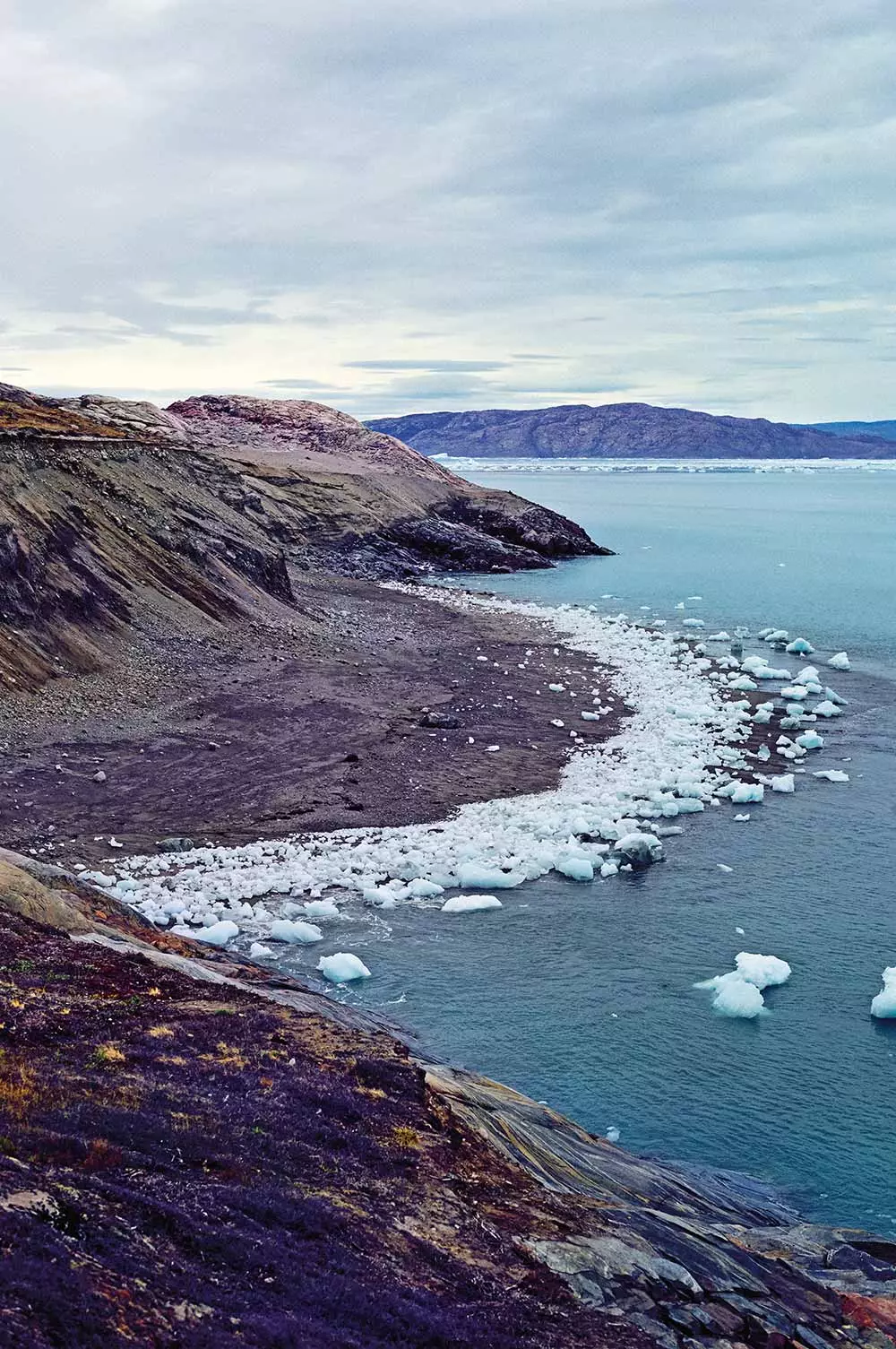
A beach near the Eqi Glacier, 240 km above the Arctic Circle
For hours, Oliver and I marvel at the variety of what we see. In the surroundings grow small and long-lived willows, twisted and lying on the rocks, and tiny bells the size of candy, a never-before-seen purple . Later, silently and for a long time, we crawl over the green softness of the moss while our greedy hands search black berries –the size of a peppercorn and with a delicious acid taste–. We gobble them up by the handful and our gums turn black. Pinkish clouds part in the middle of the night to let in a moon that hangs from the sky. Beyond the rocks, a white fox is glimpsed. As the sky begins to decline to an aubergine violet, the endless night arrives. "Isn't that very depressing?" I ask Oliver. He shrinks his shoulders. There is a specific Inuit word for this feeling: perlerorneq , What does it mean ' load ’, although many scoff when I mention it. Ilulissat teenagers say that the sun is "boring", they consider it an uncomfortable intrusion in their great ten-hour horror movie marathons. They think that we Europeans worry too much. “So much talk”, they told me laughing, “so much noise!”. In fact, the greenlandic language contains no drama. Inuit numbers only go up to 12 . After that, they just use a pragmatic and untheatrical “many”. But nevertheless, everyone seems willing to tell stories about the dreaded Qivitoq : the spirit of humans who, for one reason or another, disappeared into the wilderness where, out of rage or desperation, they learned to shapeshift.
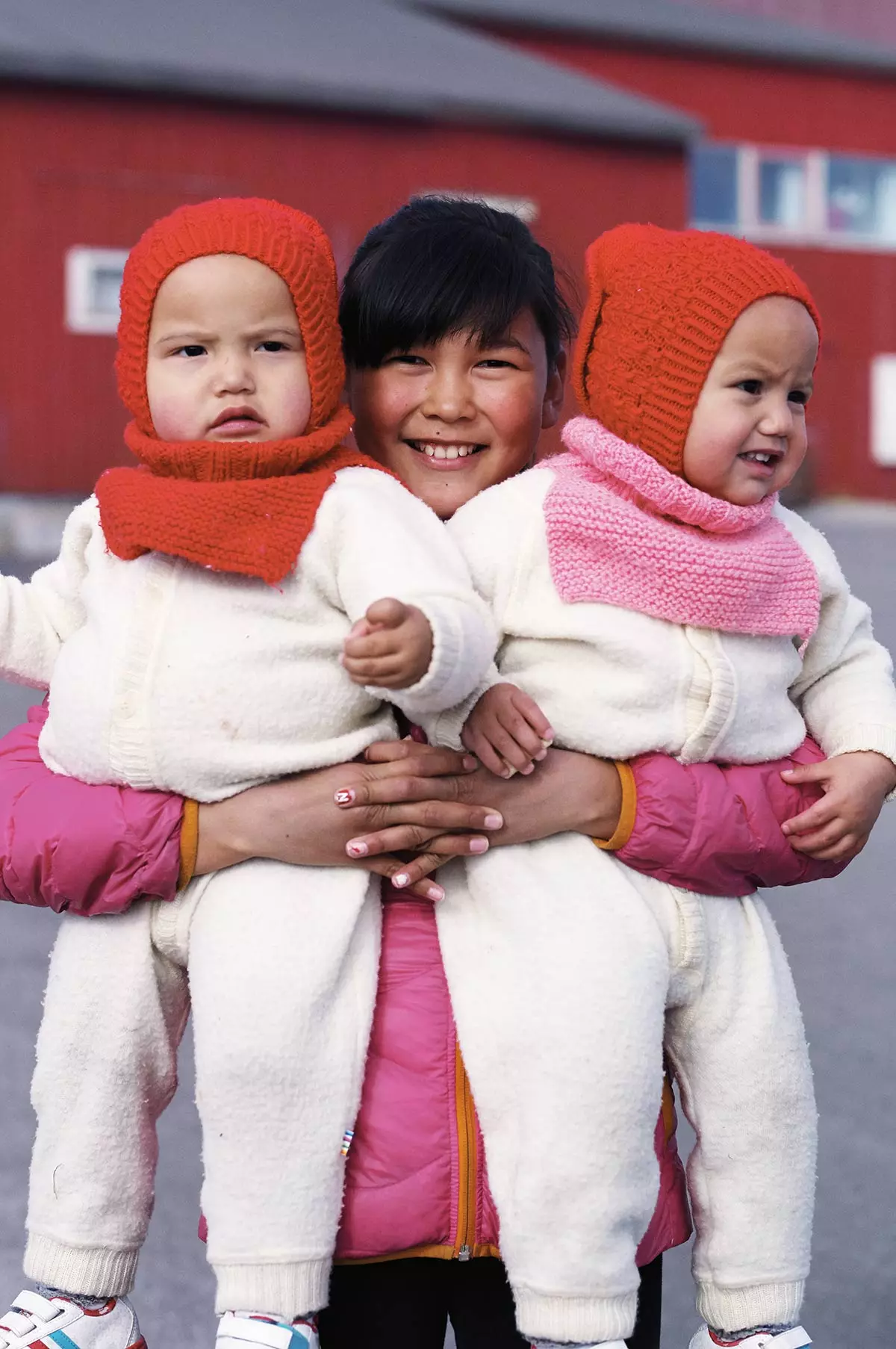
Henni Osterman, a Greenlandic mother with her children, Karla and Nivi, in Ilulissat
It must be impossible not to be superstitious in a landscape like this, I think on the way to the cabin. The darkness is total and I stumble over roots and stones. It's my last night in qi . After taking off my boots I go to bed covered with a lot of layers. In the gloom I hear the constant creak of the glacier. The conversations I have had and everything I have read on this trip come to my mind: the Norwegian explorer Fridtjof Nansen crossing the interior of Greenland in 1888 wearing only "a jacket lined with squirrel fur"; Fari leaving the sailor frozen in his ice tomb and continuing on his sled, with nothing to think about but seals, the breath of their dogs and the billowing darkness ; Nikolena telling me about the time she saw a ragged old man, “with long hair and burning eyes”, standing in the middle of a stampede of reindeer when, suddenly, he jumped, but transformed into an arctic hare.
A few days later, back in Ilulissat I try to go see the movie Mission Impossible to the sports hall, but the projectionist is recovering from a rough night. Instead, a group of eight-year-old Greenlandic girls dance to folk music in patched shoes, passing from one to another a submissive little brother while the mother proudly enjoys. Obediently, the little ones remain seated like cherubs, stuffed into wool suits recently unfolded after the summer season.
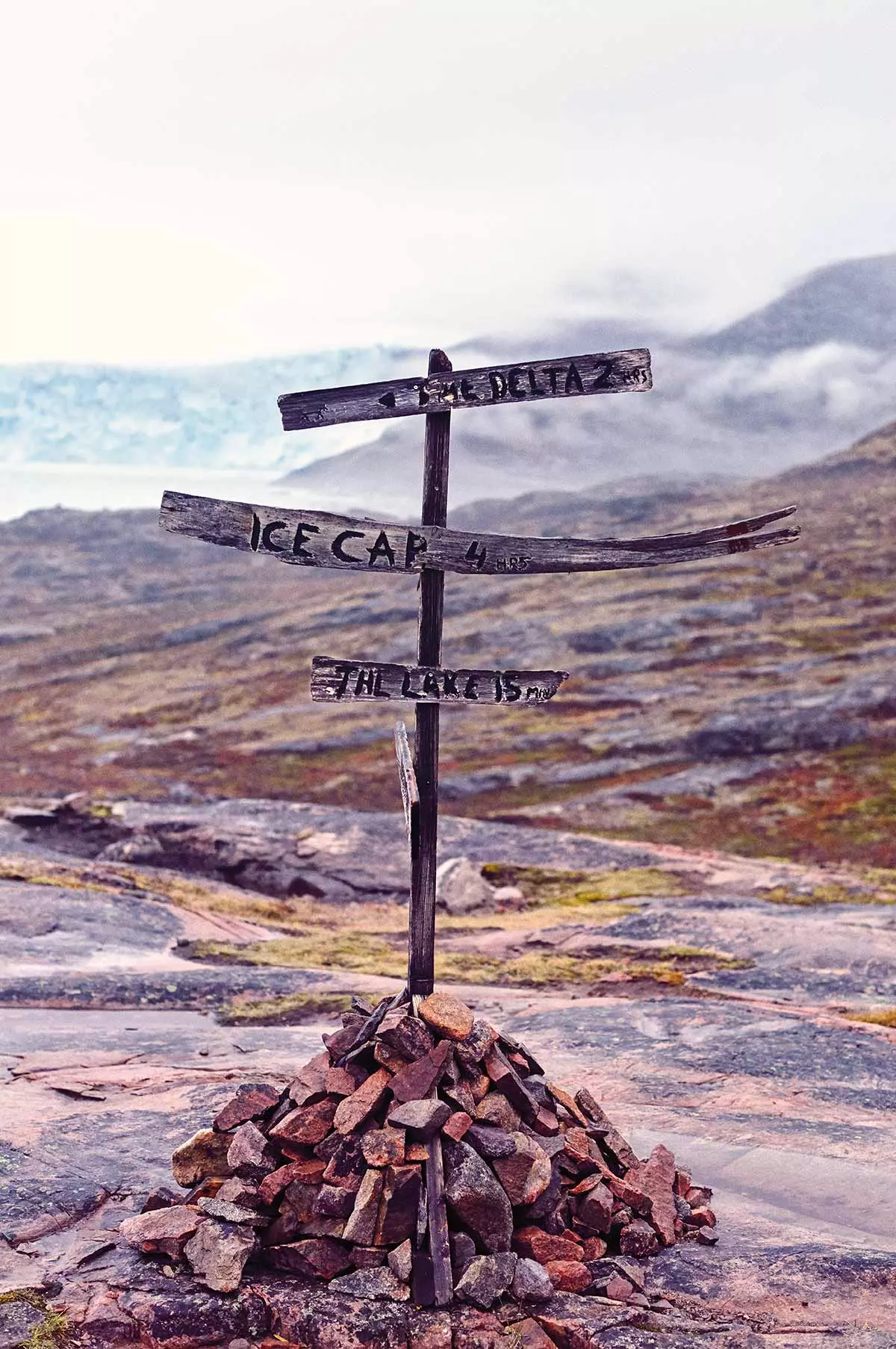
And road signs from Eqi
The radiator has heated the hall and, after the long days in the cold Eqi, I feel somewhat groggy, my eyes watery and my mind thick. I doze for a while in a chair. Later, walking through the twilight streets, I watch as they oil the sleds and count the new puppies. Larger icebergs begin to approach the bay, some as deep blue as powerful detergent. I am sure that I will always remember this feeling of being a traveler capable of being speechless before the unknown, before these masses of ice that move slowly and silently towards the shore, as if they were fairy palaces built with sapphires . Meanwhile, behind me, 6,000 dogs whimper and whimper. Winter is coming.
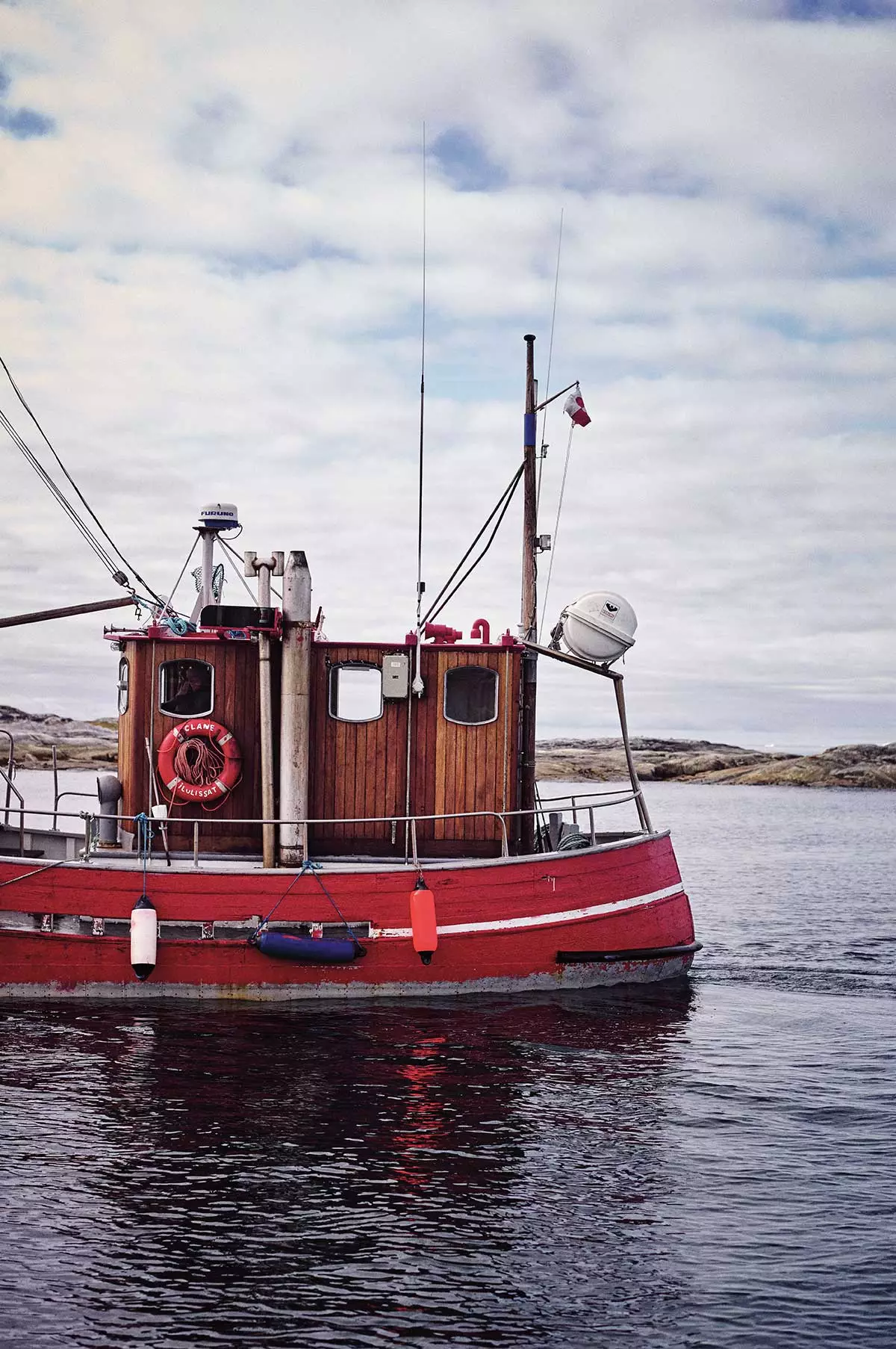
A fishing boat in the port of Ilimanaq, on the southeastern shore of Disko Bay
WHERE TO STAY AND EAT
Ilulissat is a town of about 5,000 inhabitants and the third largest settlement in Greenland. It lives by processing halibut and smells like it. But, in addition, it is the base to explore Disko Bay and its icebergs, coming from the Jakobshavn glacier, and to make excursions to the glacier Eqi, 80 kilometers to the north.
The best accommodation is the Hotel Arctic (HD: from €270), the northernmost four-star hotel in the world. The rooms have beautiful views of the fjord and its icebergs, and the food (fresh crab and arctic fish) is succulent.
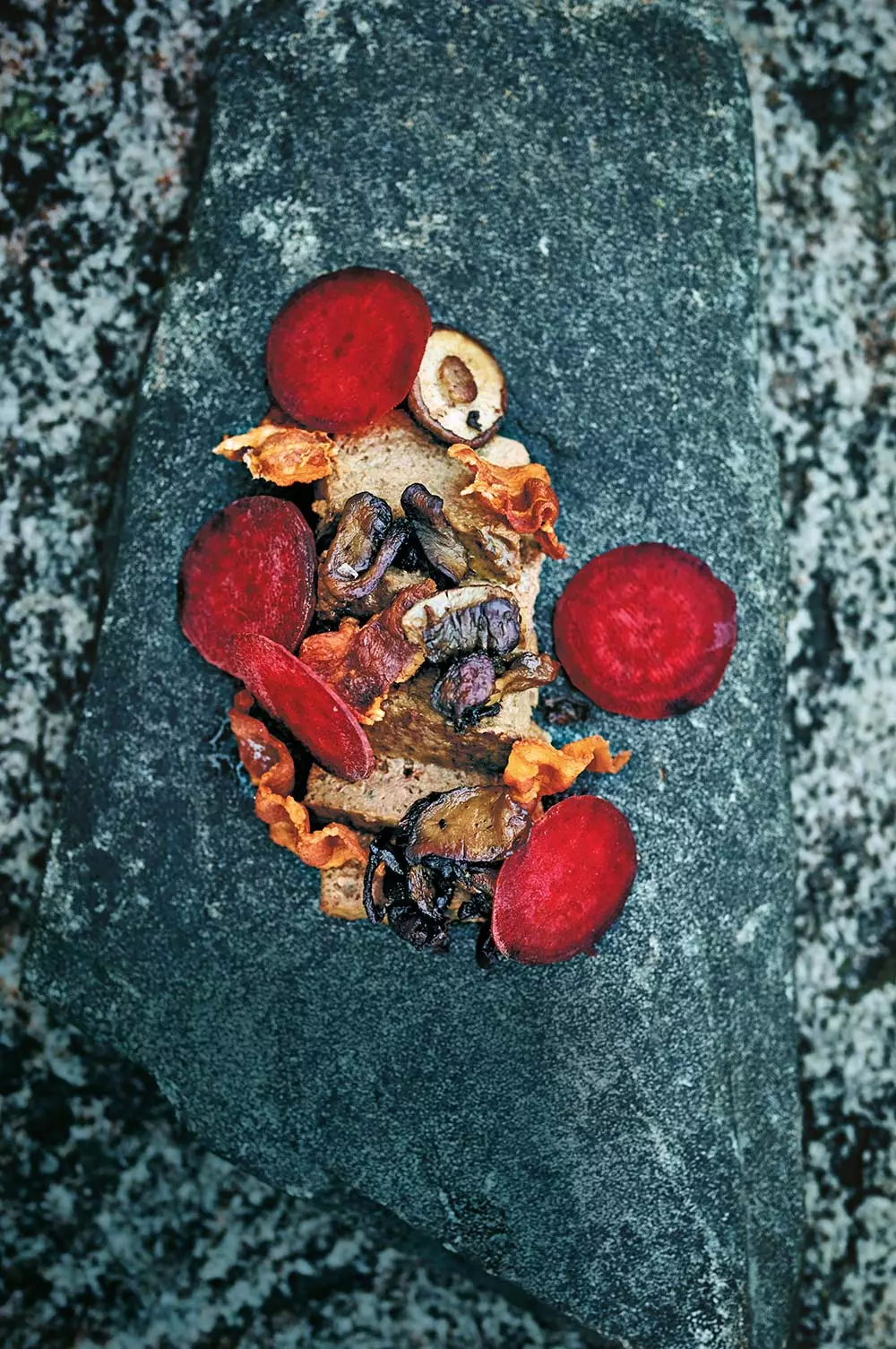
Musk Ox and Beet Pate from Café Victor, Glacier Lodge Eqi's restaurant
For those on a tight budget, Hotel Avannaa (HD: from €140), more hostel than hotel, is cozy and clean. To eat, the Inuit Cafe , far from the main avenue, serves delicious hamburgers. The Glacier Lodge Eqi (HD: from €130) can only be reached by boat – World of Greenland , in Ilulissat, organizes the excursions–. The cabins have fur rugs and gas heaters. Some have running water, but you have to reserve in advance. The hotel serves well-prepared cuisine, alcoholic coffee and homemade cake.
* Article published in the Condé Nast Traveler Magazine Spain 103. Subscribe to the printed edition (**11 printed issues and digital version for €24.75, by calling 902 53 55 57 or from our website **) and enjoy free access to the digital version of Condé Nast Traveler for iPad. The February issue of Condé Nast Traveler is available in its digital version to enjoy on your preferred device.
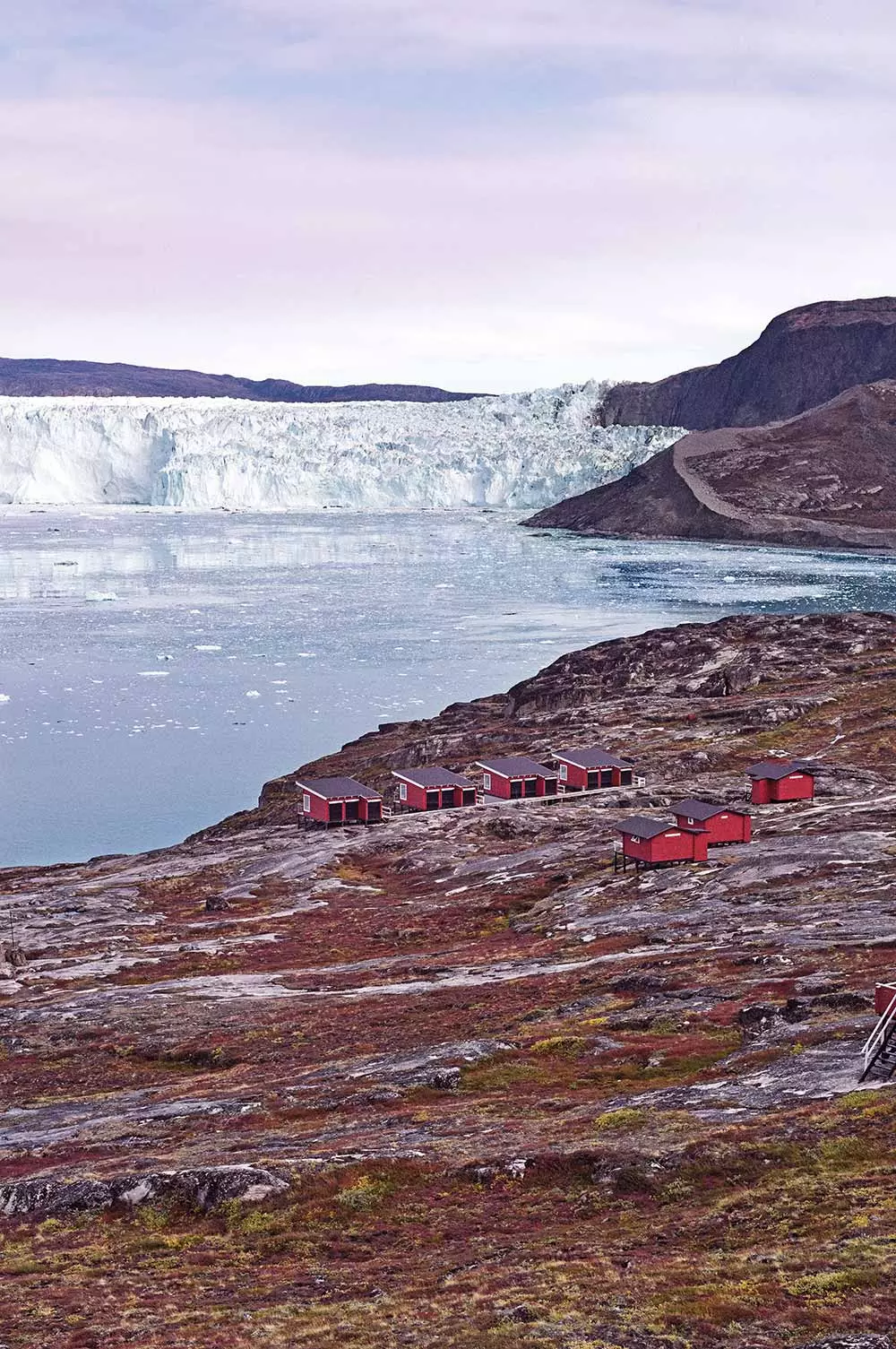
The red cabins of Glacier Lodge Eqi, with the glacier in the background, are 80 km north of Ilulissat
